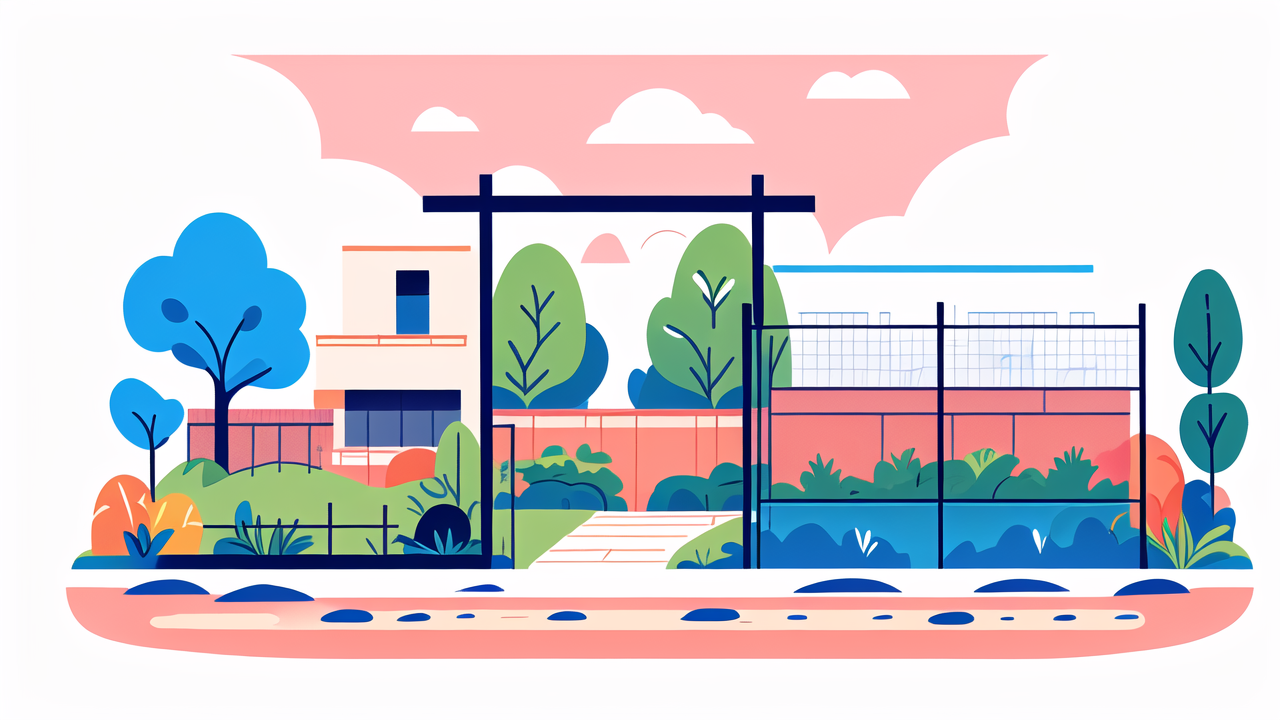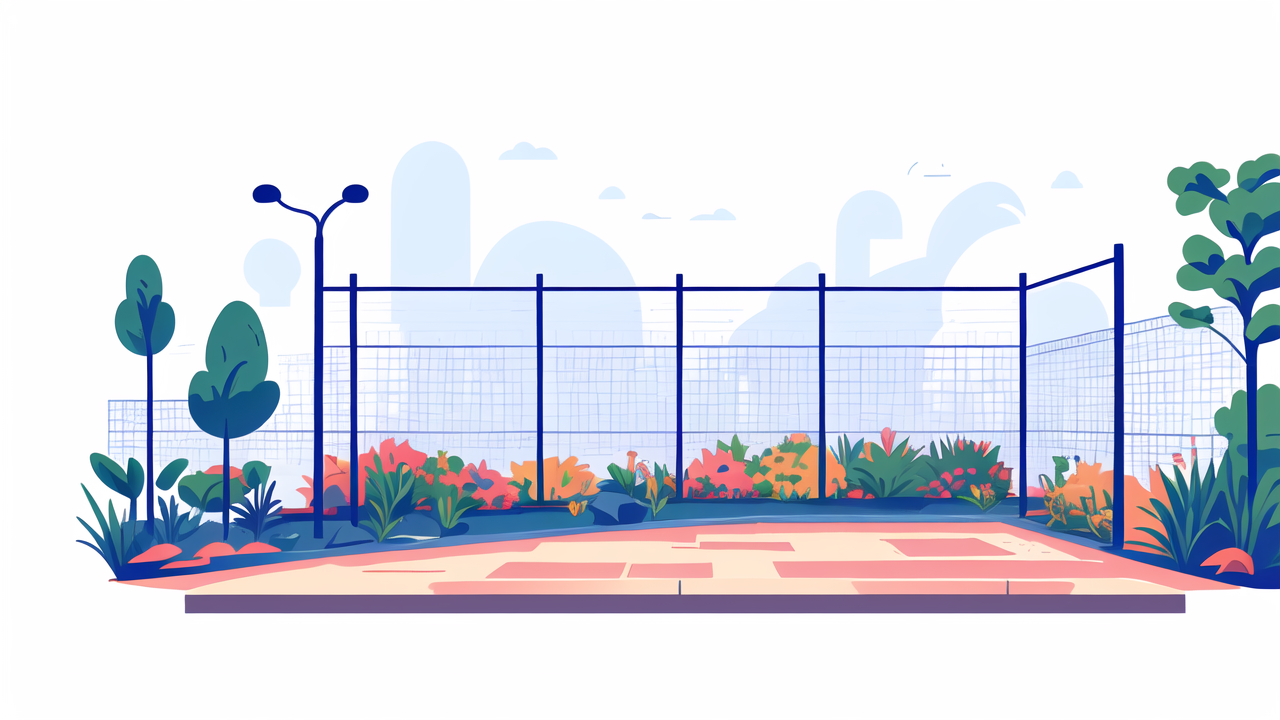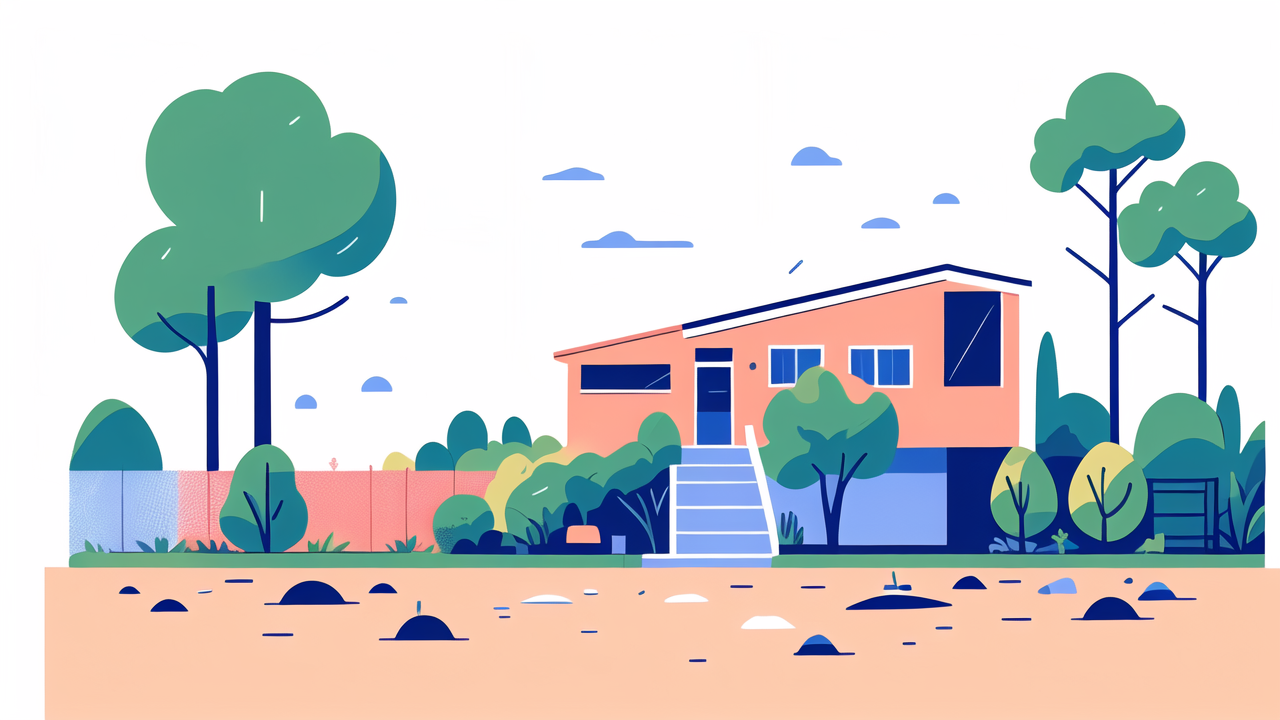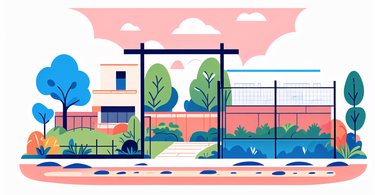Understanding the Importance of Garden Fences in the United States
The Role of Garden Fences in Landscape Management
Garden fences play a crucial role in landscape management across the United States. They define property boundaries and create distinct outdoor spaces. Fences provide privacy, security, and protection for plants and pets. They also act as wind barriers and noise reducers, enhancing the overall comfort of outdoor areas.

In urban settings, fences help create personal retreats amid busy surroundings. In rural areas, they keep wildlife at bay and livestock contained. Fences can also serve as decorative elements, adding character and style to landscapes. They frame gardens, highlight focal points, and guide the eye through outdoor spaces.
Proper fence placement can improve microclimates, creating sheltered areas for delicate plants. This aspect of landscape management is especially valuable in regions with harsh weather conditions. Overall, garden fences are versatile tools that help homeowners shape and control their outdoor environments.
Legal and Regulatory Considerations for Garden Fences
When installing a garden fence, it's crucial to be aware of legal and regulatory requirements. These can vary widely depending on location, from city ordinances to homeowners' association rules. Height restrictions are common, often limiting fences to six feet or less in residential areas.
Setback requirements dictate how close to property lines fences can be built. Some areas have rules about fence materials, styles, or colors to maintain neighborhood aesthetics. In historic districts, there may be additional regulations to preserve architectural character.
Before installation, it's wise to check local zoning laws and obtain necessary permits. Surveying property lines can prevent disputes with neighbors. Some regions require fences to be set back slightly from property lines for maintenance access.
It's also important to consider utility easements and underground services. Digging without proper knowledge can lead to costly damages. By understanding and following these regulations, homeowners can avoid fines and ensure their garden fences are both legal and functional.
Impact of Garden Fences on Property Value and Aesthetics
The right garden fence can significantly boost property value and enhance curb appeal. A well-chosen fence complements a home's architecture and landscape design. It can create a cohesive look that ties various elements of the property together.
High-quality fences made from durable materials like wrought iron or cedar can be attractive selling points. They offer longevity and low maintenance, which appeal to potential buyers. Privacy fences can make outdoor spaces feel more expansive and usable, effectively increasing a property's livable area.
However, poorly chosen or maintained fences can have the opposite effect. Dilapidated fences or those that clash with the home's style can detract from property value. It's important to strike a balance between functionality and aesthetics.
Fences can also impact neighboring properties. A thoughtfully designed fence can enhance the overall look of a street or neighborhood. This collective improvement in aesthetics can positively influence property values throughout the area.
Types of Garden Fences: Materials and Designs
Traditional Materials Elevating Contemporary Designs
Traditional fence materials are finding new life in modern garden designs. Wood, a classic choice, is being reimagined with sleek lines and unique patterns. Horizontal slat fences offer a contemporary twist on vertical board designs. Cedar and redwood remain popular for their natural beauty and durability.

Metal fences are evolving beyond basic chain links. Wrought iron fences now feature intricate designs and powder-coated finishes for added durability. Aluminum fences mimic the look of wrought iron but offer lower maintenance and cost.
Stone and brick, once used for massive walls, now appear in lower, more decorative forms. Gabion fences, made of stone-filled wire cages, blend industrial chic with natural elements. These materials add texture and a sense of permanence to landscapes.
Vinyl fencing has improved in quality and style options. It now comes in wood-grain textures and various colors, offering low-maintenance alternatives to traditional materials. By combining these materials in innovative ways, homeowners can create unique, stylish fences that stand out.
Smart Fences: Integrating Technology into Your Garden
Smart technology is revolutionizing garden fences, offering enhanced security and convenience. Solar-powered LED lights integrated into fence posts provide ambient lighting and improved visibility. Motion sensors can trigger these lights or alert homeowners to potential intruders.
Wi-Fi-enabled cameras disguised as decorative elements allow for remote monitoring of property. Some systems include two-way audio for communication with visitors or deterring unwanted animals. Smart locks on gates can be controlled via smartphone apps, allowing easy access for family and authorized guests.
Climate sensors in fences can help with garden management. They can monitor soil moisture, temperature, and sunlight exposure. This data can be used to automate irrigation systems and provide insights for plant care.
For pet owners, invisible fence technology can be incorporated into physical fences. This adds an extra layer of containment without compromising aesthetics. As technology advances, we can expect even more innovative features to enhance the functionality of garden fences.
Eco-Friendly and Sustainable Garden Fence Solutions
Eco-conscious homeowners are turning to sustainable options for garden fences. Reclaimed wood from old buildings or fallen trees offers a rustic charm while reducing environmental impact. Bamboo, a fast-growing and renewable resource, makes for sturdy yet eco-friendly fencing.
Living fences are gaining popularity. These can be created using native shrubs, trees, or vines. They provide natural habitats for wildlife and improve air quality. Espalier techniques allow fruit trees to be trained into fence-like forms, combining beauty with productivity.
Recycled materials are finding new life in fence designs. Repurposed metal, plastic, or even glass bottles can be incorporated into unique fence panels. These options not only reduce waste but also create eye-catching, one-of-a-kind designs.
Composite fencing materials made from recycled wood fibers and plastic offer durability with a lower environmental footprint. These materials resist rot and insects without the need for chemical treatments. By choosing eco-friendly options, homeowners can create beautiful boundaries while minimizing their impact on the planet.
Implementing and Maintaining Your Garden Fence
Professional Installation: Tips and Best Practices
Professional installation ensures your garden fence is sturdy, level, and properly anchored. Start by choosing a reputable contractor with experience in fence installation. Get multiple quotes and check references before making a decision.

Proper site preparation is crucial. The area should be cleared and graded if necessary. Post holes must be dug to the correct depth, typically one-third of the post's height plus six inches for gravel drainage.
Use weather-resistant materials for posts and hardware to prevent premature deterioration. Concrete footings help stabilize posts in areas with freezing temperatures or high winds. Ensure all posts are plumb and correctly spaced before attaching fence panels.
For wooden fences, treat cut ends with preservative to prevent rot. Allow for expansion and contraction in wood and vinyl fences. Follow manufacturer guidelines for specific materials to ensure proper installation and warranty coverage.
Long-Term Maintenance for Your Garden Fence
Regular maintenance extends the life of your garden fence and keeps it looking its best. For wooden fences, apply a protective sealant every few years to prevent moisture damage. Check for and replace any rotted or damaged boards promptly.
Metal fences benefit from periodic cleaning to remove dirt and prevent rust. Touch up any chips in paint or powder coating to protect the underlying metal. Tighten loose hardware and lubricate gate hinges annually.
Vinyl fences are low-maintenance but may need occasional cleaning with soap and water. Avoid harsh chemicals that could damage the material. Inspect for cracks or warping, especially after extreme weather events.
For living fences, regular pruning is essential to maintain shape and density. Remove dead or diseased branches and control any invasive growth. Fertilize and water as needed to keep plants healthy and vibrant.
Addressing Common Challenges in Garden Fence Upkeep
One common challenge is dealing with shifting soil or frost heave, which can cause fence posts to become unstable. Regular inspection and prompt re-setting of affected posts can prevent further damage. Using concrete footings or frost-resistant post designs can mitigate this issue.
Weathering and sun damage can cause fences to fade or deteriorate over time. UV-resistant paints or stains can help protect wooden fences. For other materials, choose options with built-in UV protection or apply protective coatings.
Pest infestations, such as termites or carpenter ants, can threaten wooden fences. Regular inspections and prompt treatment of any infestations are crucial. Consider using naturally resistant woods or treated lumber in pest-prone areas.
Vegetation control around fence lines is important to prevent damage from roots or climbing plants. Keep plants trimmed back and remove any that threaten the fence's integrity. Installing root barriers can protect fence posts from aggressive plant growth.
By addressing these challenges proactively, homeowners can maintain their garden fences in top condition for years to come. Regular care and timely repairs ensure that your fence continues to enhance your property's value and appearance.
